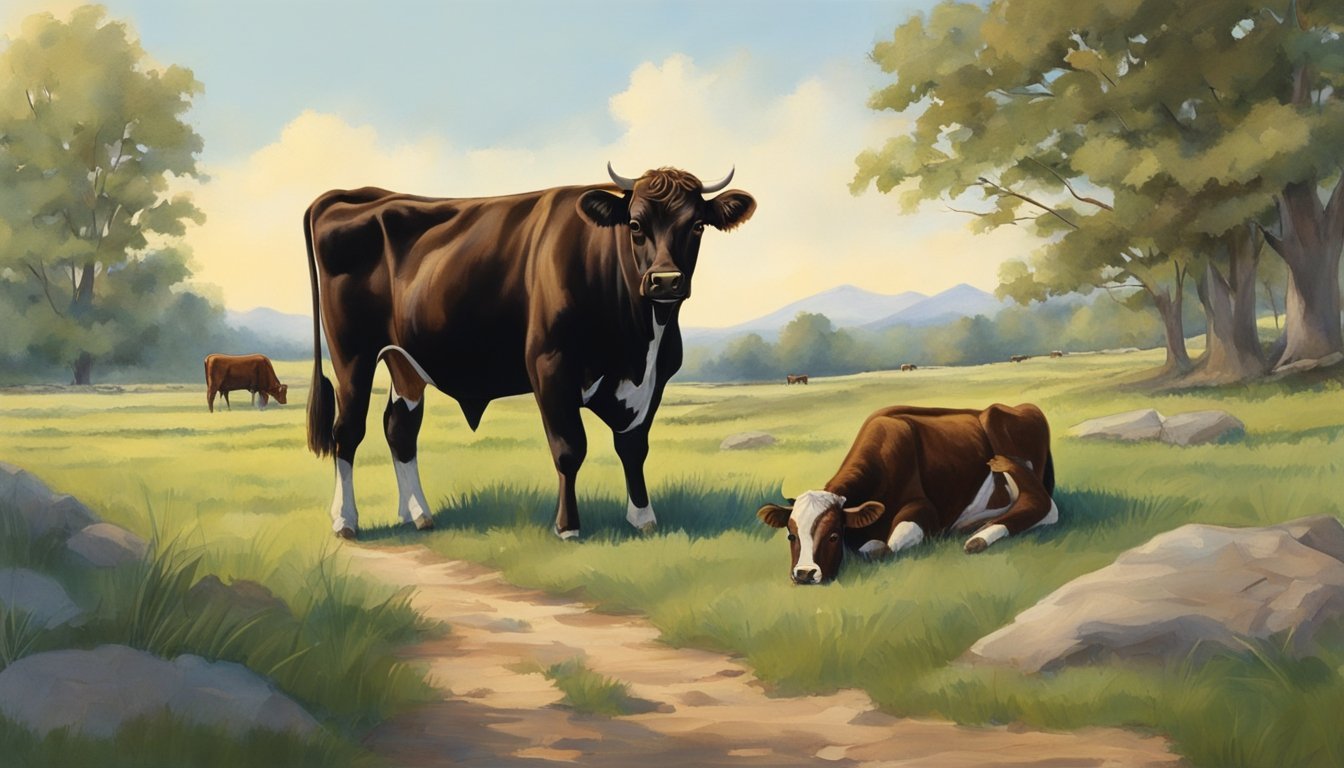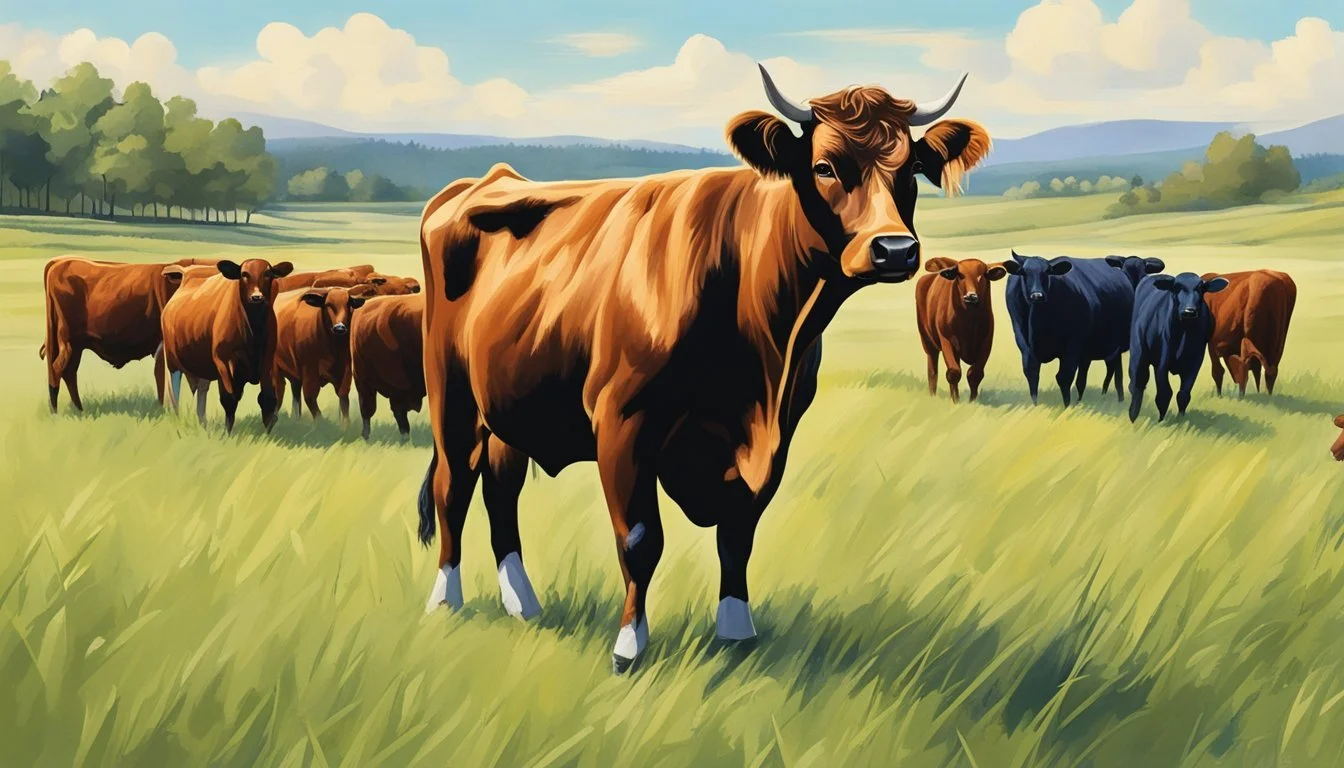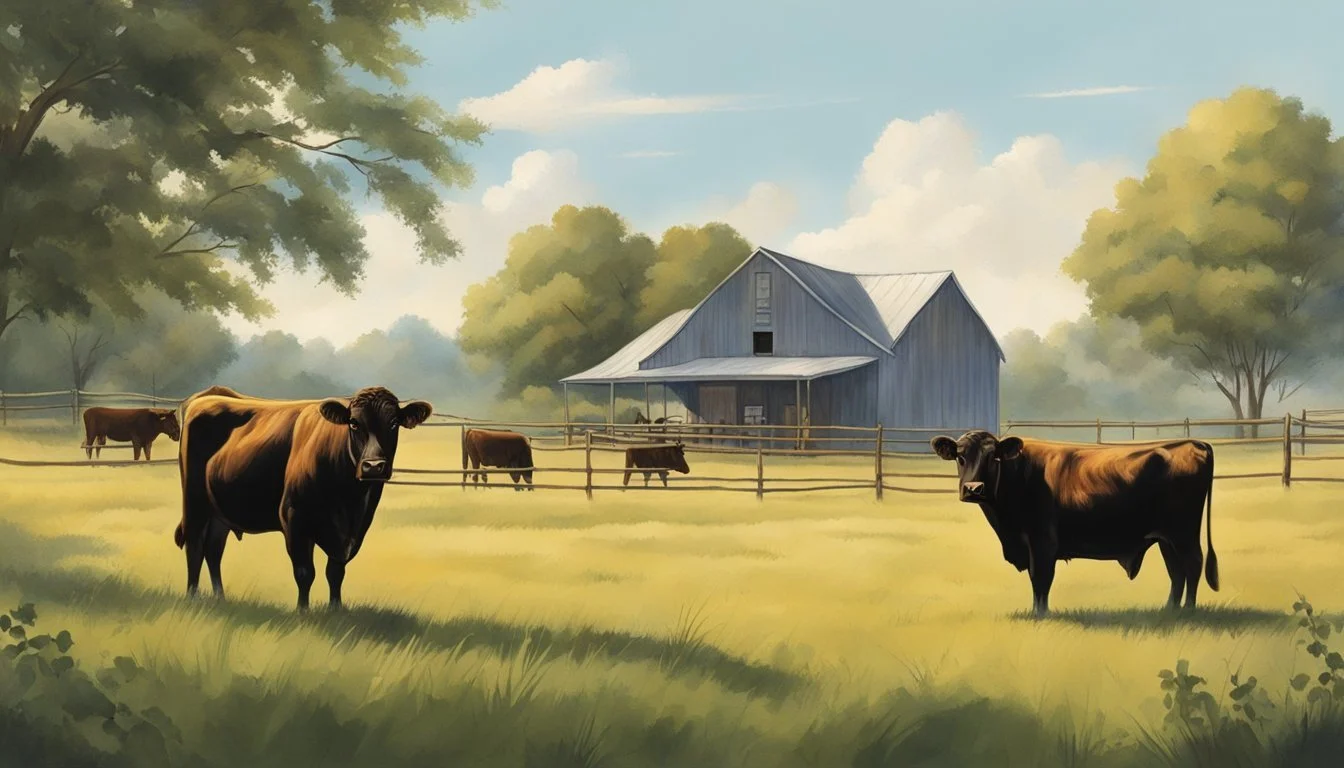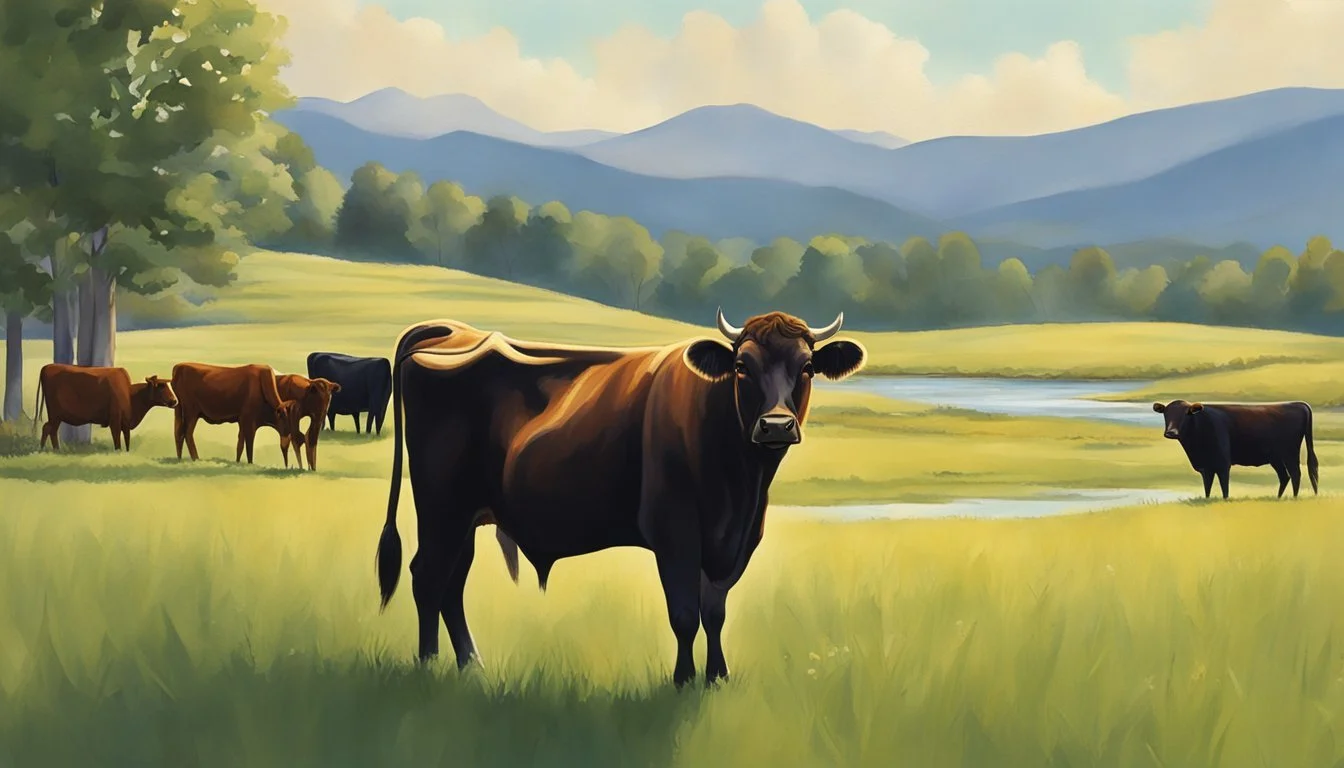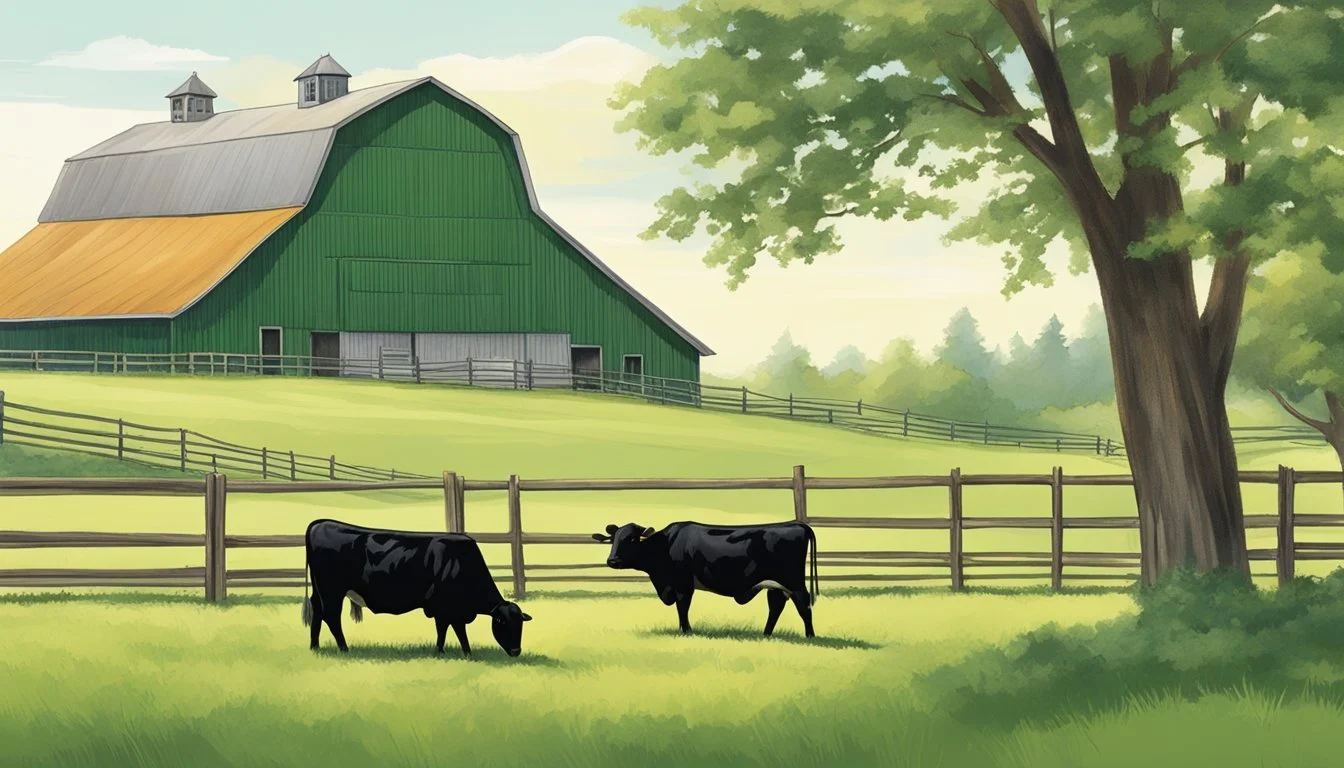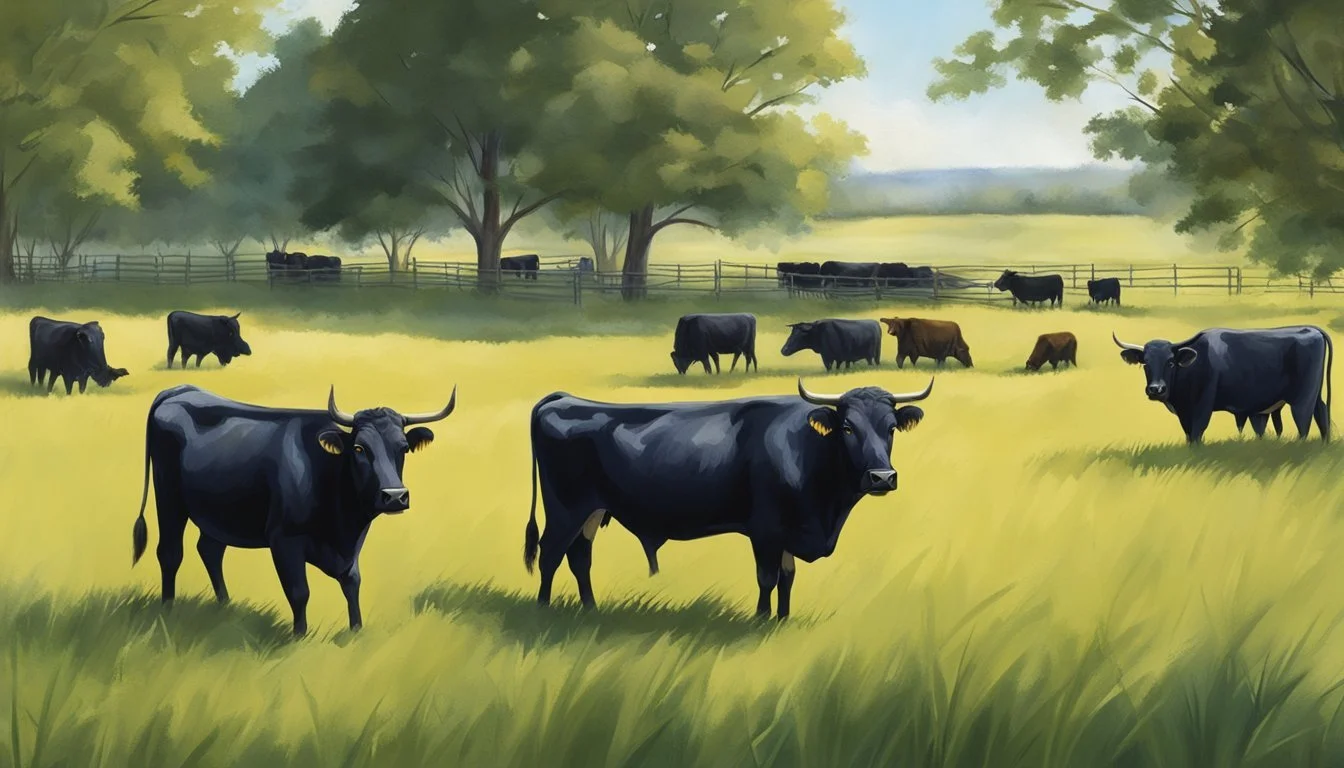Dexter Cattle Welfare
Ensuring Ethical Treatment on Homestead Farms
Dexter cattle have become increasingly popular among homesteaders who value sustainable and ethical farming practices. These small-sized cows, known for their hardiness and versatility, are well-suited for smaller plots of land, making them ideal for individuals focused on self-sufficient living. As homesteaders take on the responsibility of raising Dexter cattle, they must commit to ensuring the welfare of these animals through proper care, which includes adequate nutrition, shelter, and health management.
Ethical homesteading requires a comprehensive approach to animal welfare, encompassing both the physical and psychological well-being of Dexter cattle. Best practices include providing them with a diet that mimics their natural grazing habits, ample space to roam and exhibit natural behaviors, and preventative healthcare to safeguard against disease and injury. By adhering to these principles, homesteaders can ensure that their Dexter cattle lead fulfilling lives, which is a cornerstone of ethical livestock management and reflects positively on the quality of the byproducts, whether it be dairy, beef, or draft power.
The commitment to Dexter cattle welfare is indicative of a broader ethical stance that homesteaders are increasingly embracing. It involves making informed decisions that align with the well-being of the livestock, the sustainability of the farm ecosystem, and the expectations of a society that values the humane treatment of animals. As the movement towards ethical homesteading grows, these practices not only enhance the welfare of Dexter cattle but also strengthen the integrity and future of small-scale, responsible farming.
Origins and Characteristics of Dexter Cattle
Exploring the Dexter cattle's history and characteristics provides insight into their significance in sustainable agriculture and their suitability for homesteaders focused on ethical practices.
Breed History and Irish Roots
Dexter cattle boast a history that dates back to the early 19th century in southwestern Ireland, particularly in County Tipperary and County Kerry. They emerged from the efforts of small landholders who required versatile cattle that could efficiently utilize limited land for both milk and meat production.
Physical Traits and Breed Standard
The breed standard for Dexter cattle emphasizes their compact size and smaller stature, with a well-rounded body and strong musculature. The standard recognizes both short-legged and long-legged varieties, aiming for a balanced conformation that supports their dual-purpose role. These cattle typically have broad bodies with prominent hindquarters. The standard also indicates solid colors and generally disfavors extensive white markings.
Color Variations: Black, Red, and Dun
Dexter cattle are primarily known for their distinctive black hue, but they also come in red and dun colors. The shades range as follows:
Black: Traditional and most common color
Red: A deep, solid rust hue
Dun: A pale brown or tan
These color variations are considered equally acceptable within the breed standard, provided the animals display a uniform solid color.
Benefits of Dexter Cattle for Small Homesteads
Dexter cattle offer unique advantages for small homesteads, with their manageable size and efficient use of resources, they embody traits that align with the needs of a sustainable and ethical homestead lifestyle.
Size Efficiency and Low Maintenance
Dexter cattle are known for their compact stature, typically requiring less space than larger breeds. Small homesteads often operate on limited acreage, making the Dexter's size efficiency a vital benefit. These miniature cows can be more easily managed due to their shorter stature, leading to lower maintenance needs. Homesteaders appreciate Dexters for their ability to yield a significant amount of meat and milk relative to their size, a trait that boosts the efficiency on a smaller scale.
Grazing Needs and Environmental Impact
Dexter cattle are proficient grazers and are able to thrive on grass alone, which makes them ideal for grass-finished farming practices. They typically do not require the same level of grain supplementation as larger breeds, promoting an organic approach to cattle rearing. Their grazing habits contribute to a lower environmental impact as they help in pasture management and can improve soil health through their natural activity. Their efficiency in converting forage to meat and milk further underscores their suitability for environmentally conscious homesteads.
Adaptability to Various Climates
Adaptability is a hallmark of the Dexter breed. Originating from Ireland, these cattle have evolved to thrive in a range of weather conditions. They are known to be hardy in cold climates and can also adjust to warmer environments. This adaptability makes them an excellent choice for homesteads situated in diverse geographical locations, ensuring that they maintain productivity and well-being in various climates. Dexter cattle's versatility enhances their appeal to homesteaders seeking to sustainably manage their resources in a changing global environment.
Health and Welfare
In the realm of Dexter cattle rearing, paying heed to health and welfare is critical for maintaining both productivity and ethical standards. This includes recognizing common health challenges, implementing preventive care through veterinary science, and adhering to ethical treatment and welfare standards.
Common Health Challenges
Dexter cattle are generally hardy but they can encounter specific health challenges due to their size and breed characteristics. Common issues include:
Respiratory Conditions: These can be precipitated by variations in weather or poor ventilation in housing.
Parasitic Infections: Dexter cattle may be prone to internal and external parasites which require regular management.
Hoof Problems: These can occur due to wet conditions or inadequate hoof care, leading to lameness.
Preventative Care and Veterinary Science
Preventative care is essential to mitigate health challenges before they escalate. Dexter cattle owners should:
Regular Health Check-Ups: Schedule consistent veterinary check-ups for early detection of health issues.
Vaccination Programs: Vaccinations are imperative to prevent common bovine diseases.
Parasite Control: Implement routine deworming and ectoparasite control strategies.
Addressing the use of antibiotics, they are prescribed judiciously to prevent antibiotic resistance.
Ethical Treatment and Animal Welfare Standards
Ethical treatment is not just a moral imperative but a foundation for welfare standards in the industry. Dexter cattle welfare includes:
Proper Nutrition: They require a balanced diet tailored to their size and metabolic needs.
Adequate Housing: Housing should provide sufficient space, ventilation, and shelter.
Humane Handling: Stress-free handling practices to promote wellbeing.
The industry standards for animal welfare dictate these practices, aligning with scientific understanding and societal expectations.
Reproductive Management
Reproductive management is a critical aspect that determines the health and productivity of Dexter cattle. Ethical breeding strategies and genetics play a pivotal role, while careful attention to calving and offspring care ensures the welfare of both cows and calves.
Breeding Strategies and Genetics
Dexter cattle breeders should employ selective breeding practices to maintain genetic diversity and improve traits relevant to their homestead's specific requirements. They must assess the cattle's genetic lineage to prevent inbreeding and promote robust health characteristics. Additionally, the incorporation of genetic testing can guide informed decisions about breeding pairs, aiming to enhance desirable traits such as temperament, milk production, and ease of handling.
Select Breeding Criteria for Dexter Cattle:
Temperament: Select for calm, manageable cattle.
Milk Production: Prioritize genetics with a history of high-quality milk yield.
Physical Robustness: Choose cattle that exhibit hardiness and longevity.
Calving Ease and Offspring Care
Dexter cattle are valued for their calving ease, which must be monitored to ensure the safety of both the cow and calf during birth. Breeders should prioritize traits that contribute to trouble-free deliveries, such as appropriate pelvic structure and calf size. After birth, offspring care is paramount, with immediate attention given to the calf's feeding, health checks, and bonding with the mother. Calves should receive colostrum promptly to absorb the necessary antibodies for a strong immune system.
Offspring Care Checklist:
Immediate Post-Birth: Ensure the calf is breathing properly and establish mother-calf bonding.
Colostrum: Administer the first feeding within 2 hours.
Health Checks: Regularly monitor for signs of distress or illness.
Nutrition and Feeding Practices
Optimal nutrition and feeding practices are essential for the welfare and productivity of Dexter cattle. When homesteaders prioritize a well-balanced diet tailored to the needs of the breed, they see clear benefits in health and milk production.
Grass vs. Grain Feeding
Dexter cattle can thrive on a primarily grass-fed diet due to their efficient foraging ability and adaptability to various pasture conditions. The shift toward grass-fed beef has been associated with a range of potential health benefits in cattle, as well as in the quality of meat and milk produced. It's crucial to provide pastures composed of mixed grass species to ensure cattle are receiving a range of nutrients. In contrast, grain-feeding can be used to supplement a grass diet, particularly when higher energy content is required, such as during lactation or for finishing beef cattle.
Benefits of Grass-Feeding:
Enhanced milk flavor with higher levels of beneficial fatty acids.
Potentially lower digestive issues compared to high-grain diets.
Considerations for Grain-Feeding:
Can increase milk production when energy demands are high.
May require careful management to avoid digestive upset such as acidosis.
Supplementing with Hay and Other Feed
During the winter months or periods of drought when fresh grass is not available, hay becomes a crucial part of Dexter cattle's diet. It can provide the necessary fiber and ensure that cattle maintain a healthy weight and condition.
Types of Hay:
Legume hay like alfalfa, rich in protein and energy.
Grass hay offers adequate fiber but might need supplementation for higher nutritional content.
Supplemental feeds such as silage, root crops, or commercial feed mixes can also be included to balance the diet and meet specific nutrient requirements.
Ensuring a Balanced Diet for Optimal Health
A balanced diet for Dexter cattle should address their nutritional needs for maintenance, growth, reproduction, and lactation. Homesteaders must consider the balance of carbohydrates, proteins, fats, vitamins, and minerals.
Key Nutrients:
Protein: Essential for growth and milk production.
Carbohydrates: Primary energy source.
Vitamins & Minerals: For overall health and disease prevention.
Routine nutritional assessment and adjustment are advisable to maintain cattle health and optimize milk yield. The approach to feeding should be dynamic, shifting with life stages, health status, and production goals of the cattle.
Dexter Cattle Dairy Production
In the realm of homestead dairy production, Dexter cattle are prized for their rich milk, with high butterfat content. Owners can capitalize on this by creating a range of dairy products that are beneficial for both home consumption and local markets.
Milk Yield and Butterfat Content
Dexter cattle produce 2 to 2.5 gallons of milk per day, which is less than larger dairy breeds but ideal for small-scale operations. The milk stands out for its high butterfat content, typically between 4% to 5%, creating a rich and creamy product. These factors make Dexters an excellent choice for homesteaders who prioritize quality over quantity.
Dairy Products: Cheese and Other Offerings
Given the high butterfat content, Dexter milk is excellent for creating artisanal cheeses and other dairy products such as butter and yogurt. Homesteaders can diversify their offerings by crafting:
Cheddar
Gouda
Cream cheese
Cheese made from Dexter milk can be characterized by a rich flavor and smooth texture, distinguishing it from products made with milk from other breeds.
Managing Dairy Production on a Homestead
Homesteaders managing Dexter cattle for dairy production should implement a consistent milking schedule, maintain proper diet and health routine for their animals, and ensure clean milking practices. By keeping the cattle stress-free and healthy, they can optimize milk production and ensure the longevity of their dairy operations. Proper storage and handling of the milk and dairy products are critical to maintaining quality and safety for consumption.
Beef Production and Meat Quality
In the context of Dexter cattle, meat quality and production involve specific practices to enhance marbling, flavor, and the yield of marketable meat cuts. Homesteaders who prioritize these aspects can contribute to more sustainable and ethical beef production while optimizing the return on their investment through strategic marketing.
Raising Dexter for Quality Beef
Dexter cattle are known for mature carcasses that can yield approximately 400 pounds of meat. To raise Dexter beef for quality, they should be provided a balanced diet and allowed regular access to pasture, which contributes to the development of well-marbled, flavorful meat. Proper herd management, including regular health checks and low-stress handling techniques, also play a crucial role in maintaining the well-being of the animals and the quality of the beef they produce.
Marbling and Meat Cuts
Marbling refers to the intramuscular fat found within the meat and is a key determiner for meat tenderness and flavor. Dexters, with their smaller size, typically produce meat that is richly marbled, which is a trait coveted by beef connoisseurs. Common cuts from Dexter cattle include:
Ribeye: Known for significant marbling and tenderness.
Tenderloin: A premium cut that offers a leaner option without compromising flavor.
Sirloin: Offers a balanced combination of marbling and muscle.
Marketing and Selling Dexter Beef
Marketing Dexter beef effectively relies on understanding the target demographic and the unique selling points of the meat produced. These cattle can provide quality beef with a higher marbling score, which should be highlighted in marketing materials. Direct marketing strategies such as farm-to-table sales, local farmers' markets, and online platforms help in reaching consumers who value locally sourced, ethically raised, and high-quality beef. Transparent communication about raising practices can further enhance consumer trust and loyalty.
Cattle Care and Management
Dexter cattle are known for their adaptability and are increasingly popular among ethical homesteaders. Proper care and management are fundamental to ensure their well-being and productivity. The following guide covers the essentials of housing, routine care, and compliance for Dexter cattle.
Housing and Shelter Requirements
For Dexter cattle, shelter functions as a sanctuary from extreme weather conditions and a space to rest securely. It is critical they have a dry, well-ventilated area that shields them from harsh elements, whether it be intense sun or severe cold. An ideal barn or shed should offer:
Minimum Space Requirements: Approximately 1.5 to 2 square meters per animal.
Bedding Materials: Straw or wood shavings to maintain warmth and absorb moisture.
Proper Drainage: To prevent the accumulation of mud and water, leading to unsanitary conditions.
Routine Care and Maintenance
Dexter cattle require consistent care to maintain their health and welfare. They have a good temperament, making routine husbandry practices such as milking or veterinary checks less stressful for both the livestock and their handlers.
Regular tasks for Dexter cattle should include:
Feeding: A balanced diet comprising of pasture grasses and, when necessary, supplementary feed.
Health Checks: Regular monitoring for signs of illness or injury.
Hoof Care: Trimming as needed to prevent foot problems.
Grooming: To promote skin health and hygiene.
Record Keeping and Industry Compliance
Maintaining accurate and up-to-date records is a critical aspect of Dexter cattle care and management. Records ensure that each animal receives timely interventions and contribute to industry-wide data on best practices. Homesteaders should track:
Veterinary Visits: Dates and reasons for consultations, treatments administered, and follow-up care.
Breeding Information: Details of mating, birthing, and lineage.
Growth and Production: Regular weight recordings and dairy yield for milking Dexter cattle.
Compliance with industry guidelines not only promotes animal welfare but also reinforces the ethical standards of the homesteading community.
The Ethical Homesteader's Approach
Ethical homesteaders prioritize sustainable agriculture, animal welfare, and education within their community. They employ practices that ensure the health and well-being of their livestock, with a focus on small-scale, resilient farming systems.
Sustainable Agriculture Practices
Sustainable agriculture is the foundation of ethical homesteading. Homesteaders who practice sustainability:
Use crop rotation, organic methods, and permaculture principles to maintain soil health and reduce environmental impact.
Implement rainwater harvesting and drip irrigation to conserve water resources.
Opt for renewable energy sources such as solar panels to power farm operations.
Embrace locally-sourced feed for livestock to reduce the carbon footprint and support the local economy.
Animal Husbandry and Welfare
Ethical animal husbandry is central to homesteading. Key aspects include:
Providing adequate shelter, clean water, and quality feed to ensure the physical health of Dexter cattle.
Adhering to practices that allow for natural behaviors, such as grazing and social interaction among the cattle.
Regular health check-ups and preventative care, including vaccinations and parasite control, to prevent diseases.
Limiting stress through gentle handling and humane management techniques.
Community and Education in Homesteading
Homesteaders often become pillars in their communities by:
Sharing knowledge on ethical practices and their benefits to the environment and animal welfare.
Hosting workshops and farm visits to educate others about sustainable living and small-scale farming.
Supporting local markets and food cooperatives to bolster community resilience and self-sufficiency.
Creating a network for hobby farmers to exchange goods, services, and information, fostering a robust local food system.
Resources and Associations
Ethical homesteaders looking to raise Dexter cattle will find valuable resources and support through dedicated associations. These entities provide a platform to purchase animals, access educational materials, and engage in networking opportunities.
Finding Dexter Cattle for Sale
For those in search of Dexter cattle for sale, the American Dexter Cattle Association maintains a comprehensive breeder directory. Small-scale farmers can:
Identify reputable Dexter cattle breeders
Locate available animals across the United States
Prospective Dexter cattle owners are encouraged to engage with certified breeders to ensure animal welfare standards are met.
Dexter Cattle Associations and Support
Dexter Cattle Associations offer extensive support to both novices and experienced owners. The most prominent, the American Dexter Cattle Association, provides:
Guidance on best practices for raising Dexter cattle
Information on productivity and breed-specific care
Connection with an association also facilitates networking with a community that values the ethical treatment and welfare of Dexter cattle.
Educational Materials and Networking
Availability of educational materials fosters informed management decisions, thereby improving the well-being of Dexter cattle. The associations offer resources such as:
Welfare and ethics papers detailing optimal farming practices for cattle
Regular updates on current research and industry advancements
Networking opportunities through events and forums enable exchange of insights among homesteaders, thus promoting the growth and popularity of Dexter cattle breeds within the farming community.

